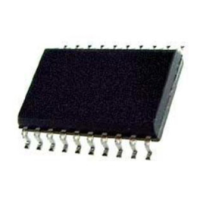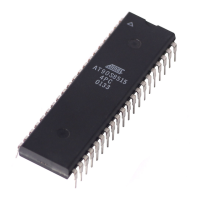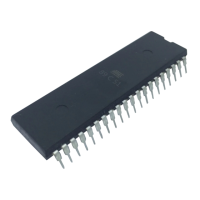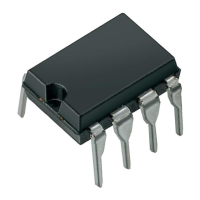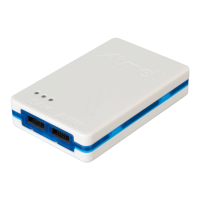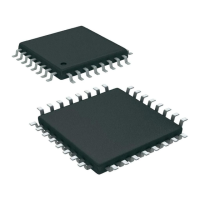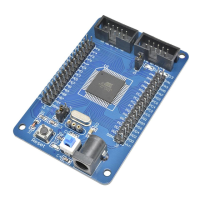AT90S2313
57
Fuse Bits
The AT90S2313 has two Fuse bits, SPIEN and FSTRT.
• When the SPIEN Fuse is programmed (‘0’), Serial Program and Data Downloading is enabled. Default value is
programmed (‘0’).
• When the FSTRT Fuse is programmed (‘0’), the short start-up time is selected. Default value is unprogrammed (‘1’).
Parts with this bit pre-programmed (‘0’) can be delivered on demand.
The Fuse bits are not accessible in Serial Programming Mode. The status of the Fuses are not affected by Chip Erase.
Signature Bytes
All Atmel microcontrollers have a three-byte signature code which identifies the device. This code can be read in both serial
and parallel mode. The three bytes reside in a separate address space.
For the AT90S2313
(1)
they are:
1. $000: $1E (indicates manufactured by Atmel)
2. $001: $91 (indicates 2 kB Flash memory)
3. $002: $01 (indicates AT90S2313 device when signature byte $001 is $91)
Note: 1. When both Lock bits are programmed (Lock mode 3), the signature bytes can not be read in serial mode. Reading the signa-
ture bytes will return: $00, $01 and $02.
Programming the Flash and EEPROM
Atmel’s AT90S2313 offers 2K bytes of in-system reprogrammable Flash Program memory and 128 bytes of EEPROM Data
memory.
The AT90S2313 is shipped with the on-chip Flash Program and EEPROM Data memory arrays in the erased state
(i.e. contents = $FF) and ready to be programmed. This device supports a High-Voltage (12V) Parallel programming mode
and a Low-Voltage Serial programming mode. The +12V is used for programming enable only, and no current of signifi-
cance is drawn by this pin. The serial programming mode provides a convenient way to download program and data into
the AT90S2313 inside the user’s system.
The Program and EEPROM memory arrays in the AT90S2313 are programmed byte-by-byte in either programming
modes. For the EEPROM, an auto-erase cycle is provided within the self-timed write instruction in the serial programming
mode. During programming, the supply voltage must be in accordance with Table 22.
Parallel Programming
This section describes how to parallel program and verify Flash Program memory, EEPROM Data memory, Lock bits and
Fuse bits in the AT90S2313.
Signal Names
In this section, some pins of the AT90S2313 are referenced by signal names describing their function during parallel
programming. Pins not described in the following table are referenced by pin names. See Figure 49 and Table 23. Pins not
described in Table 23 are referenced by pin names.
The XA1/XA0 pins determine the action executed when the XTAL1 pin is given a positive pulse. The bit coding are shown
in Table 24.
When pulsing WR
or OE, the command loaded determines the action executed. The Command is a byte where the
different bits are assigned functions as shown in Table 25.
Table 22. Supply voltage during programming
Part Serial programming Parallel programming
AT90S2313 2.7 - 6.0V 4.5 - 5.5V
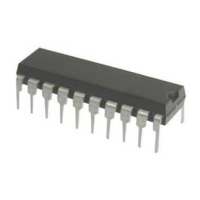
